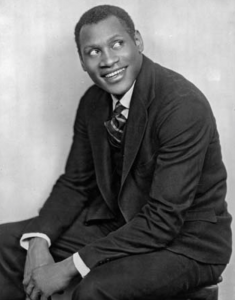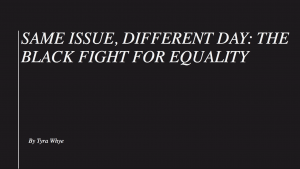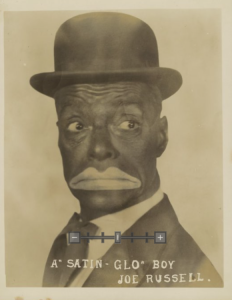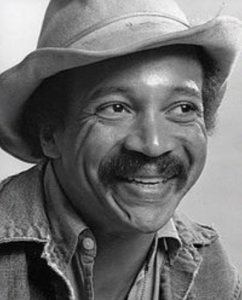My Portfolio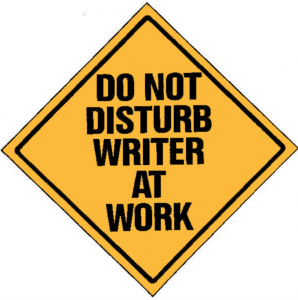
Hi, my name is Tyra Whye, I am currently a first year in Dr. Cooke’s class, Personal is the Public. Welcome to my portfolio, where I will discuss the two areas in which I improved my writing throughout the semester. More specifically, I will be discussing syntax and detail. Before I improved these two areas my writing was very repetitive, unnecessarily long, and a little vague. By making changes and learning how to properly use syntax and detail my work became much easier for the audience to follow. I was able to shorten my sentences, include only the most important information, and still maintain an intricate level of detail. I was able to do so through peer revision, self-reflection, in-class workshops, and comments from the teacher. Overall, by improving syntax and detail throughout the semester, my writing has improved and matured.
Syntax Examples:
Example 1:
My in class writing about Paul Robeson is also an example of how I improved syntax throughout the semester. The purpose of Paul Robeson assignment was to explain the importance of Paul Robeson relating to the black theater. My piece was not great, because it was not as concise as it could have been. Sentences could have been shortened and better words could have been added or removed. For example, I wrote, “There are many mixed reviews and opinions about his acting and portrayal of Othello, but what can be said is Robeson definitely made history and an impact on how society viewed African Americans in theater.” This isn’t necessarily a bad sentence, but there is room for improvement. When I wrote it towards the beginning of the semester it sounded fine to me, but after a semester of editing, peer revision, and comments from the professor I now realise that it needs work. This sentence is too long, a simple and easy fix would be to take out the comma, add a period and remove the word “but.” I would also remove, “ What can be said is…” and replace it with, “More importantly…” This would leave us with “There are many mixed reviews and opinions about his acting and portrayal of Othello. More importantly, Robeson definitely made history and an impact on how society viewed African Americans in theater.” Throughout the semester I learned that little fixes and edits, similar to the one I displayed above, can make a difference in how a paragraph sounds.
Example 2:
My curated exhibit is an example of how my syntax improved. My syntax in the exhibit was never bad, but it certainly could use improvement. It was important that I changed the syntax because the purpose of this assignment was to specifically to write an introduction, explaining to the audience what they could expect to see throughout the curated exhibit. Some sentences got the point across but were just a little bit awkward and could be rephrased. For example, “This exhibit is a representation of the day to day struggle of African Americans socially and in the work environment.” This sentence was just very wordy and longer than it needed to be. The words “day to day” were unnecessarily along with the awkward phrasing of “socially and in the work environment. Through the help of the in class writing exercise where one would go to the board, read off a sentence, and the class would help restructure and reword it, my sentences became a lot better. For example, this is the changed sentence, “This exhibit depicts the daily struggle of African Americans for social justice and professionally.” This sentence is much more concise, gives the same accurate information, all in a more clear manner.
Example 3:
proposal introduction draft
My proposal introduction draft is an example of how my syntax improved. The purpose of this assignment was to propose what exactly I would be doing and researching for my curated exhibit. My specific proposal was to research the common struggle of minorities in the work force. throughout my exhibit. Making each sentence short and concise was my goal. Originally it felt as if I was repeating certain points or information about Bill Gunn and the play that inspired my exhibit. It also felt as if some sentences were too word heavy. In this specific example I used I wrote about the artifact’s description. For example I wrote, “The long intricate manner in which Gunn wrote, which, as a result, produced such a controversial piece, can be seen through the many edits made by Gunn which can be seen by viewing the simple notes to exed out paragraphs, Gunn’s passion for perfecting Rhinestone is present.” When I went back to reflect on this piece and read it outloud to myself I realized this sentence sounded very jumbled and didn’t flow well. There were much more concise and clear ways to say short phrases like, “The long intricate manner in which Gunn wrote, which as a result.” This sentence was also way too long to be one sentence. After editing, the sentence became, “The deep thought process, that produced such a controversial piece, can be seen through the many edits made by Gunn. From simple notes to exed out paragraphs Gunn’s passion for perfecting Rhinestone is present.” By shortening sentences and being more careful about word choice, the proposal became much more clear.
Detail Examples:
Example 1:
My narrative essay is an example of how I improved detail throughout my paper. My first draft was very bland, incorporating little detail which makes it very hard for the reader to follow. It made the assignment hard to complete, which was to write an essay describing what a person walking through the exhibit would see and feel. For example, in the first draft I wrote as a description,” It depicts a white man with his face painted black with grease.” This description does not paint a picture in the viewer’s head of what the photograph looks like. Through peer revision and comments from the professor I asked myself “how” “why” and “what I feel” to help add much more detail to my essay. The description changed to, “It depicts a white man with his face painted black with grease, attempting to resemble an African American. The man is making what appears to be a humorous face. His mouth is left clear from the grease, creating a large outline of lips, igniting the stereotype that African American’s have large lips.” Descriptions such as “humorous face” and the details of how his mouth was left “clear from the grease” help the readers imagine what exactly the man in the photograph looks like. I think that the changes made were definitely drastic and helped create a much stronger piece that was easier for the audience to envision.
Example 2:
My Plan of Action is an example of how my syntax improved. My syntax in the Plan of Action is not bad, but it certainly could use improvement in specific areas. It is important to pay attention to syntax in this piece because the purpose of this assignment was to specifically write a step by step plan explaining how you were going to begin researching for the curated exhibit. Some sentences got the point across but were just a little bit awkward and could be rephrased. For example“I chose a Journal because a magazine article giving an opinion on one of Gunn’s, notoriously controversial, plays would be helpful to show how society or a member of society reacts to a play that may or may not line up with their views.” This sentence was just very wordy and longer than it needed to be. The phrases “to show how society or a member of society” and “that may or may not ,” were unnecessary and just adding extra words. Once again, it sounded fine when I wrote it but through the help of the in class writing exercise, where one would go to the board, read off a sentence, and the class would help restructure and reword it, I understand how to more concisely structure sentences. For example, if we had done a second draft of the Plan of Action I would have changed the two problem phrases and the final sentence would be, “I chose a Journal because a magazine article giving an opinion on one of Gunn’s, notoriously controversial, plays would be helpful to show how society reacts to a play that might not not correspond with their views.” This sentence is much more concise, gives the same accurate information, all in a more clear manner.
Example 3:
My statement of purpose is an example of how my syntax improved. The purpose of this assignment was to state the purpose of my exhibit. Making each sentence short and concise was my goal. Originally it felt as if I was repeating certain points or information about Bill Gunn and the play that inspired my exhibit. It also felt as if some sentences were too word heavy. When I went back to reflect on this piece and read it outloud to myself I realized that some sentences sounded very jumbled and didn’t flow well. After editing the piece before submission they were much more concise. For example, I wrote, Gunn created such a great example of a hostile work environment that shows how one man must attempt to work around his obstacles in order to have his script published. By connecting Renaissance to the Black Lives Matter Movement it is easy for readers to see the similarities between what was happening 30-40 years ago and what is still happening today.” Each sentence in this paragraph is short, concise and still displays the information necessary to help the readers easily understand what it is that I am trying to convey. By shortening sentences and being more careful about word choice, the statement of purpose became much more clear.
Featured Artifact
proposalfinaldraftincludingobjective
The featured artifact, that is a representation both of how my syntax and detail have improved in this class, is my proposal objective. The purpose of the proposal objective is to explain what exactly the objective of my curated exhibit is. This piece of writing a great example of my syntax and detail because sentences are short and concise, while still stating the information that is necessary for readers to understand what my objective is.
While discussing detail, it is important to notice that this piece is not simply including visual detail but informational detail, meaning detail important to the audience’s understanding of the topic at hand. For example I wrote, “In Rhinestone, Gunn shows examples of conflict, ignorant comments, and refusal to accept negative opinions, represented by black screenwright, Sam.” Details important to the audience are the name of the play, Rhinestone, the specific oppression and environment the victim was facing, conflict and ignorance, how the victim stood his ground, by refusing to accept negative opinions, and who the victim was, Sam. This very short sentence includes all the information necessary for the reader to understand what is going on in the play. The minor details provide a background information for the audience to follow in order to understand the inspiration of my exhibit.
When looking at syntax one can notice the how concise each sentence is. They are all grammatically correct, avoiding wordy sentences that can confuse the reader and stray them from the topic at hand. The opening sentence is a particularly great example of syntax within the proposal objective. For example, the opening sentence reads, “Bill Gunn portrays the everyday ignorance that occurs in society to show the necessity of standing up against the oppression enforced by the majority.” This sentence is loaded with information, which can easily confuse a reader. By using phrases such as, “that occurs in society” and, “necessity of standing up” that could have otherwise been phrased as, “that has taken place repeatedly throughout our history,” and, “the need to fight for one’s rights and make a change,” we are eliminating unnecessary words and delivering only the information necessary to the reader. The phrasing and sentence structure throughout the proposal objective was key to displaying information in a way that an audience could easily understand and appreciate.
In conclusion, the proposal objective is a great example of my two areas of improvement because they both show how to deliver important information in the best manner possible. Throughout self reflection and peer revision I have come to learn that this best manner in which to deliver important information is in a clear concise sentence. I have written many pieces for this class, which can be seen throughout the portfolio, but the what I really learned is that at times less words are better because they make it easier for the audience to follow. This is especially true when one is writing a piece such as an objective, proposal, or really any work of writing where the purpose is for an audience to read and understand everything you, as the author, are trying to convey.
Reflection Letter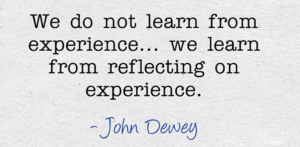
Throughout the semester I have run into little issues regarding my writing, meaning sometimes there were errors with syntax, detail, and the flow of paper within my work. This was more relevant within my narrative essay. The purpose of the narrative essay was to describe how one, who had never seen my exhibit, reacted to my curated exhibit. When I began writing my narrative essay I simply put words on the paper and wrote what I saw while scrolling through my exhibit, acting as if I had never seen it before. Unfortunately, this plan did not work out as well as I had hoped. I lacked detail, necessary information, and some sentences seemed repetitive.
I did not realize this until I had my peer review session with my partner, Tim. He pointed out that what I wrote may sound very clear to me because I had a biased view towards my exhibit. I could pretend that I didn’t know what it featured but in the back of my mind I was very familiar with the exhibit. He pointed out specific spots to me that he believed needed more work regarding syntax, detail, and flow of the paper. I mostly focused on syntax and fixed the awkward phrasing of my sentences.
I then emailed my essay to my professor, Dr. Cooke, looking for comments. He responded saying I could use more detail, explaining that it would be helpful to “ask myself ‘how’ and ‘why’…” I took those comments into consideration and revised my essay. I asked myself what specific things said within the photograph and why were they happening. For example the second draft reads, “The following artifact is a photograph called Five men and women with strike signs in front of Fifth Avenue. This photograph depicts men and women on strike from their jobs due to the low wages they were being paid.” After realizing that I did not once even mention what their signs read or anything that had to do with their body language I revised this section of the essay to, “The following artifact is a photograph called Five men and women with strike signs in front of Fifth Avenue. This photograph depicts two men and three women, all African American, on strike from their jobs due to the low wages they were being paid. They hold signs saying, “Can’t Live on .38 cents a week, On Strike.” Courage can be seen within their faces.” The detail added makes the photograph that much more clear to the audience, which is basically the point of the assignment.
I then read my essay out loud to my roommate while showing her the pictures of the exhibit to see if the two corresponded. Luckily, she said my description matched what she was seeing very well and that my sentences were easy to follow. Overall, I would say I definitely learned how to analyze artifacts better in order to summarize a well thought out description of the items. I also improved my writing as a process, by drafting, revision, and editing my paper multiple times. By gaining a better understanding of the course outcomes I have been able to apply them to my writing and therefore become a much stronger and successful writer.
Another example of how I improved my writing this semester is with the curated exhibit. I have never had an assignment before that allowed us to to use as many modes of media as we would like. The purpose of this project was to create a multimodal exhibit. This project was so open ended that I felt I needed to restrict myself. When I began this project I only wanted to include photographs. I felt overwhelmed asking myself, “Would it be too much to add more than one type of media?” Well, after the field trip to the Billops- Hatch exhibit in the Woodruff Library, I realized the more media the better. The more the diverse the artifacts the more interesting an exhibit is.
I found a song called, “Blackbird” from a civil rights play called, “Fly Blackbird.” The problem that then arose was how would I find the music and enter it within my project. After doing copious amounts of research I came across a site that would let me borrow a book featuring the lyrics from a college outside of Georgia. I was then able to transfer the lyrics into my exhibit, but once again another problem arose. How exactly was I going to write about lyrics?
I sat back and reflected upon how I wrote the past captions for my curated exhibit. I simply wrote about the most important parts of the photographs. Lyrics are not a photograph so there isn’t anything necessarily important, meaning something for the audience to see, but there was something important for the audience to know in order to have a better understanding of the lyrics and how they connected to my curated exhibit. I wrote about what the play stood for and interpreted the lyrics. An example of my final product is, “Fly Blackbird” is a song from the musical Fly Blackbird, a play performed by a racially diverse cast about the Civil Rights Movement and how important it was to be strong and stand up for what you believe in. More specifically the song “Fly Blackbird” is about blackbirds staying passionate and not giving up on their goal to fly and be free. This is an exact representation of the Civil Rights Movement, meaning it was time to fight for black’s rights and to be free from the inequality that was and still is present in the United States today.” In conclusion, throughout the process of writing my curated exhibit captions I learned about reflection, using multiple modes, and locating and integrating archival material into writing and multimodal projects. Throughout the semester, I have learned and successfully used the majority of the course outcomes to better my writing.

